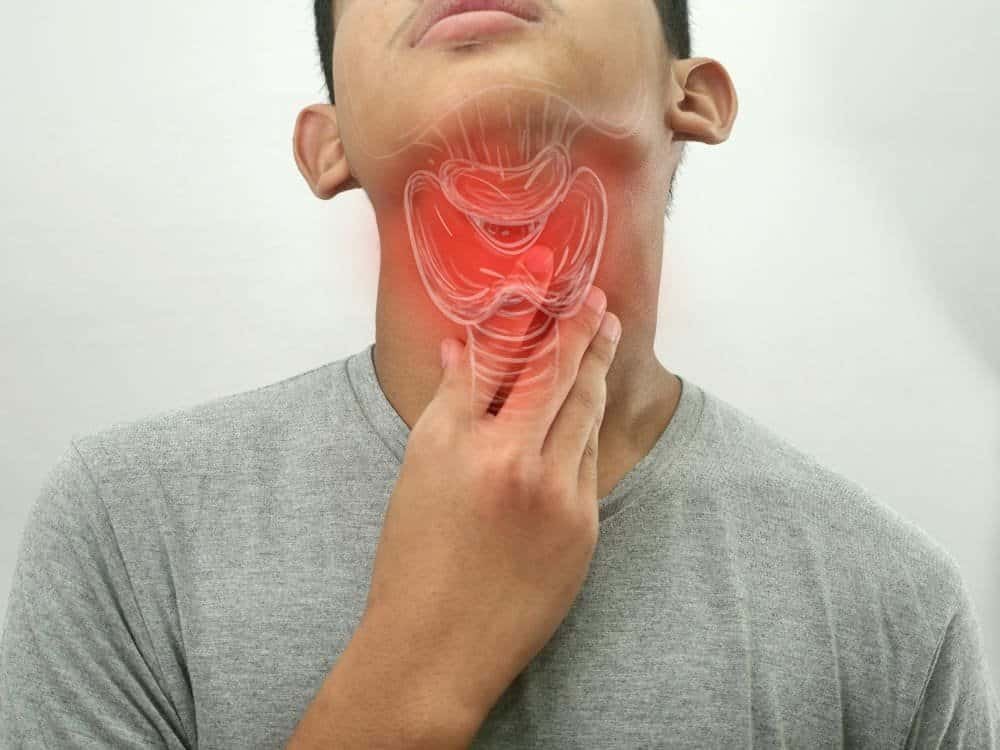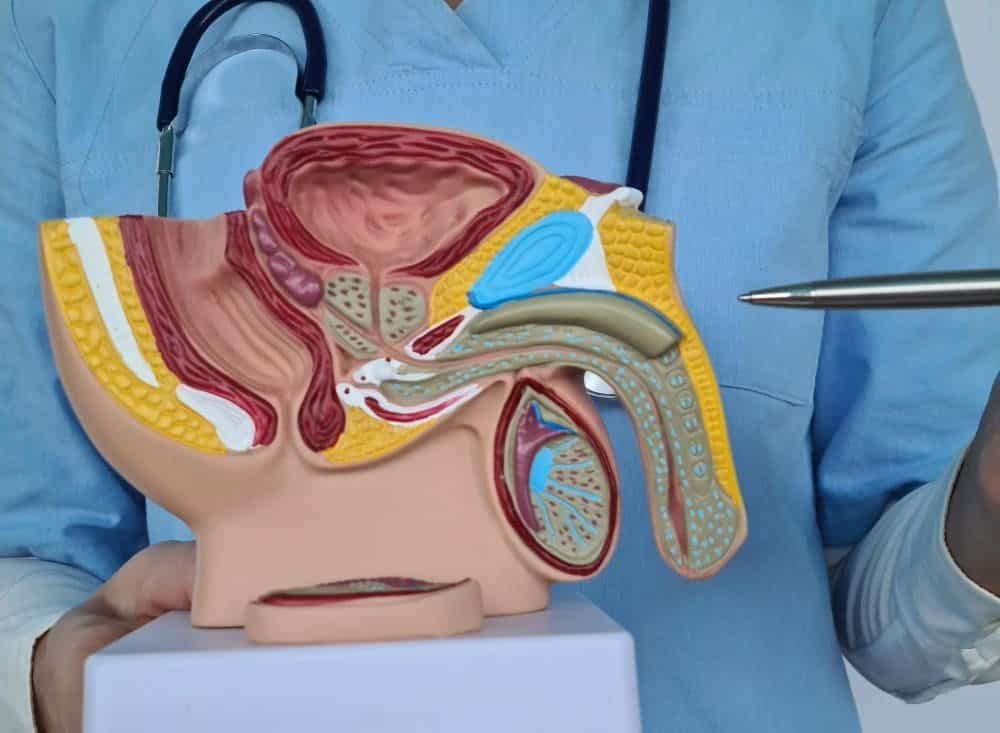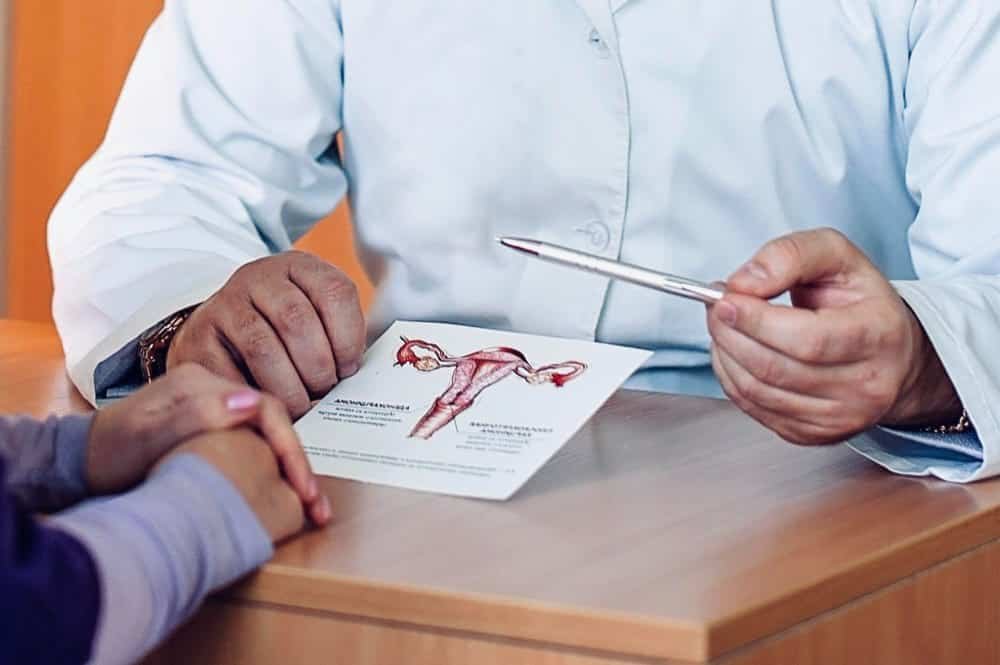Living with an enlarged thyroid gland or goiter can be uncomfortable and worrying. Instead of traditional surgery, doctors now offer a minimally invasive alternative that reduces thyroid volume, improves symptoms, and helps patients recover faster. This treatment is known as thyroid artery embolization.

What Is Thyroid Artery Embolization (TAE)?
Thyroid artery embolization (TAE) is a minimally invasive procedure that aims to reduce the size of a goiter by blocking the blood flow to the thyroid gland. The technique involves inserting tiny particles to occlude the feeding arteries of the goiter, leading to gradual shrinkage of the thyroid tissue over time.
Unlike open surgery, which removes part or all of the thyroid gland, embolization works by cutting off the blood supply. Over the following months post-procedure, the gland shrinks, and patients report continued improvement in breathing, swallowing, and cosmetic appearance.
Why Consider Thyroid Arterial Embolization?
For decades, surgery was the primary option for treating enlarged goiters and thyroid nodules. However, not all patients are good candidates for surgery due to age, underlying health conditions, or concerns about scarring and complications.
TAE offers a safe and effective alternative that:
- Avoids large incisions 🩹
- Can be performed under local anesthesia
- Provides volume reduction of the thyroid gland
- Helps patients return to normal life quickly
The Thyroid Artery Anatomy and Embolization Technique
In TAE, an interventional radiologist carefully maps the thyroid artery anatomy before beginning the procedure.
Using imaging guidance, a thin catheter is inserted into a blood vessel (often through the groin). The catheter is then guided toward the arteries feeding the goiter. Once in place, particles are injected to occlude the vessels, blocking blood flow.
This technique has gained recognition in specialized centers such as, where experts also use embolization to treat conditions like thyroid artery aneurysm.
How the Procedure Works
Thyroid artery embolization (TAE) is carried out by an interventional radiologist in a specialized clinic or hospital. It is a minimally invasive procedure that doesn’t require large incisions. Instead, it relies on image-guided techniques to reach the feeding arteries of the goiter.
Here’s a step-by-step look at how it happens:
- Assessment and Planning – Imaging tests such as ultrasound or CT scans help doctors study the thyroid artery anatomy and locate the inferior thyroid artery or other branches that supply blood to the thyroid gland.
- Accessing the Artery – A tiny catheter is inserted through a small puncture, usually in the groin or wrist. This allows access to the arterial system without open surgery.
- Guiding the Catheter – Using real-time X-ray imaging, the catheter is carefully advanced to the arteries feeding the thyroid gland.
- Delivering the Particles – The radiologist injects small medical particles designed to occlude the vessels. These particles block blood flow to the thyroid tissue, leading to volume reduction of the enlarged gland over time.
- Completion and Recovery – Once the arteries are treated, the catheter is removed, and the puncture site is closed. Most patients are observed for a short time and can go home the same or next day.
This technique involves blocking arterial flow in a targeted way, which allows the body to gradually adapt as the thyroid gland shrinks. Unlike surgery, there’s no removal of the gland, only a controlled reduction in blood supply.
Benefits of Thyroid Artery Goiter Embolization

- Minimally invasive with fewer complications compared to surgery
- Reduces thyroid volume gradually, improving breathing and swallowing
- Can be an alternative for patients with toxic diffuse goiters or nodules
- Short recovery time
- Often performed without general anesthesia
- Preserves surrounding structures such as vocal cords and parathyroid glands
Risks and Possible Complications ⚠️
As with any medical treatment, there are potential risks. Thyroid embolization complications may include:
- Temporary pain or swelling in the neck
- Minor bleeding at the catheter site
- Rare injury to nearby arteries or tissues
- Possibility of incomplete embolization
Most studies report that TAE is a safe and effective treatment, especially when performed by experienced interventional radiologists.
Thyroid Artery Embolization vs Surgery
Traditional thyroid surgery (thyroidectomy) is highly effective but comes with risks like scarring, nerve injury, or lifelong hormone replacement.
TAE, on the other hand, provides:
- A minimally invasive alternative to surgery
- Lower risk of complications
- A shorter hospital stay
- No visible scar on the neck
However, not all cases are suitable. Patients with very large or cancerous nodules may still need surgery.
Success Rate and Outcomes 📊
Published studies report that patients experience significant thyroid volume reduction after TAE. The thyroid artery embolization success rate is promising, with many patients showing improvement in symptoms within months.
By 6 to 12 months post-procedure, most patients report:
- Goiter shrinkage
- Easier breathing and swallowing
- Cosmetic improvement in neck contour
Cost Considerations
The thyroid artery embolization cost varies depending on location, hospital, and doctor’s expertise. In major centers like the California Thyroid Center or Middle Eastern clinics, the cost may be lower compared to the US.
While insurance coverage differs, many patients consider it a worthwhile investment compared to the risks of surgery.
Who Can Benefit from TAE?
Ideal patients for thyroid artery embolization include:
- People with goiters causing pressure symptoms
- Patients unfit for surgery due to age or medical conditions
- Those seeking a scar-free, minimally invasive option
- Patients with nodules or toxic diffuse goiter resistant to medication
Alternatives to Thyroid Artery Embolization
Other minimally invasive options include:
- Thyroid radiofrequency ablation (RFA) – Often searched as thyroid RFA near me, this technique uses heat to shrink nodules.
- Microwave ablation – Uses electromagnetic energy to treat thyroid nodules.
- Thyroid ablation with ethanol – In selected cases.
These alternatives are also offered by specialists like Dr. Samir Abdel Ghaffar, who provides advanced thyroid catheterization and ablation therapies.
Thyroid Artery Embolization for Goiter Reduction
Patients with large goiters often experience neck swelling, difficulty swallowing, or shortness of breath. Thyroid artery embolization for goiter reduction is now a practical alternative. By blocking the feeding arteries, the procedure reduces thyroid volume and helps the body gradually adapt.
Special Cases: Thyroid Artery Aneurysm
Though rare, a thyroid artery aneurysm can be treated with embolization. The same technique—occluding the arterial flow with particles—stops blood supply to the aneurysm, preventing rupture and stabilizing the patient.
Patient Experience and Recovery
Most patients describe the procedure as surprisingly comfortable. Recovery usually involves:
- Staying in the hospital for monitoring (few hours to overnight)
- Mild discomfort in the neck for a few days
- Gradual volume reduction of the thyroid gland over several months
- Regular follow-ups to assess improvement
Frequently Asked Questions (FAQ)
1. What is thyroid artery embolization?
Thyroid artery embolization (TAE) is a minimally invasive procedure where tiny particles are used to block the feeding arteries of the goiter, reducing blood flow to the thyroid gland. Over time, the gland shrinks, easing pressure symptoms and improving appearance.
2. What is the success rate of thyroid artery embolization?
Studies show that the thyroid artery embolization success rate is high, with most patients experiencing significant thyroid volume reduction within 6–12 months post-procedure. Many also report continued improvement in breathing and swallowing.
3. What are the complications of thyroid embolization?
While TAE is generally safe, thyroid embolization complications may include mild pain, swelling, or rare vascular injury. Major risks are far less common than with open surgery.
4. How much does thyroid artery embolization cost?
The thyroid artery embolization cost varies by country and hospital. Centers in the UK may have higher costs compared to clinics in the Middle East. It’s best to ask your interventional radiologist for an exact estimate.
5. Is thyroid artery embolization available in Egypt, Saudi Arabia, or the UAE?
Yes ✅. Specialized interventional radiologists, such as Dr. Samir Abdel Ghaffar, perform thyroid artery embolization and other thyroid treatments (RFA, microwave ablation, thyroid catheterization) in Egypt and the Middle East. Availability may differ by city, so always confirm with local thyroid centers.
6. Is embolization better than thyroid surgery?
For many patients, TAE is a safe, minimally invasive alternative to surgery. It avoids scars, reduces risks, and allows faster recovery. However, surgery may still be necessary in cases of very large goiters, cancerous nodules, or when embolization is not suitable.
Final Thoughts ✨
Thyroid arterial embolization offers hope for patients struggling with goiters and nodules. It is a minimally invasive procedure that works by blocking the feeding arteries of the goiter, allowing the gland to shrink over time. With proven safety, effectiveness, and growing success rates, it is becoming a recognized alternative to surgery.
If you’re considering treatment, consult an interventional radiologist like Dr. Samir Abdel Ghaffar, who specializes in embolization, radiofrequency ablation, and microwave therapy for the thyroid gland.
 العربية
العربية 

